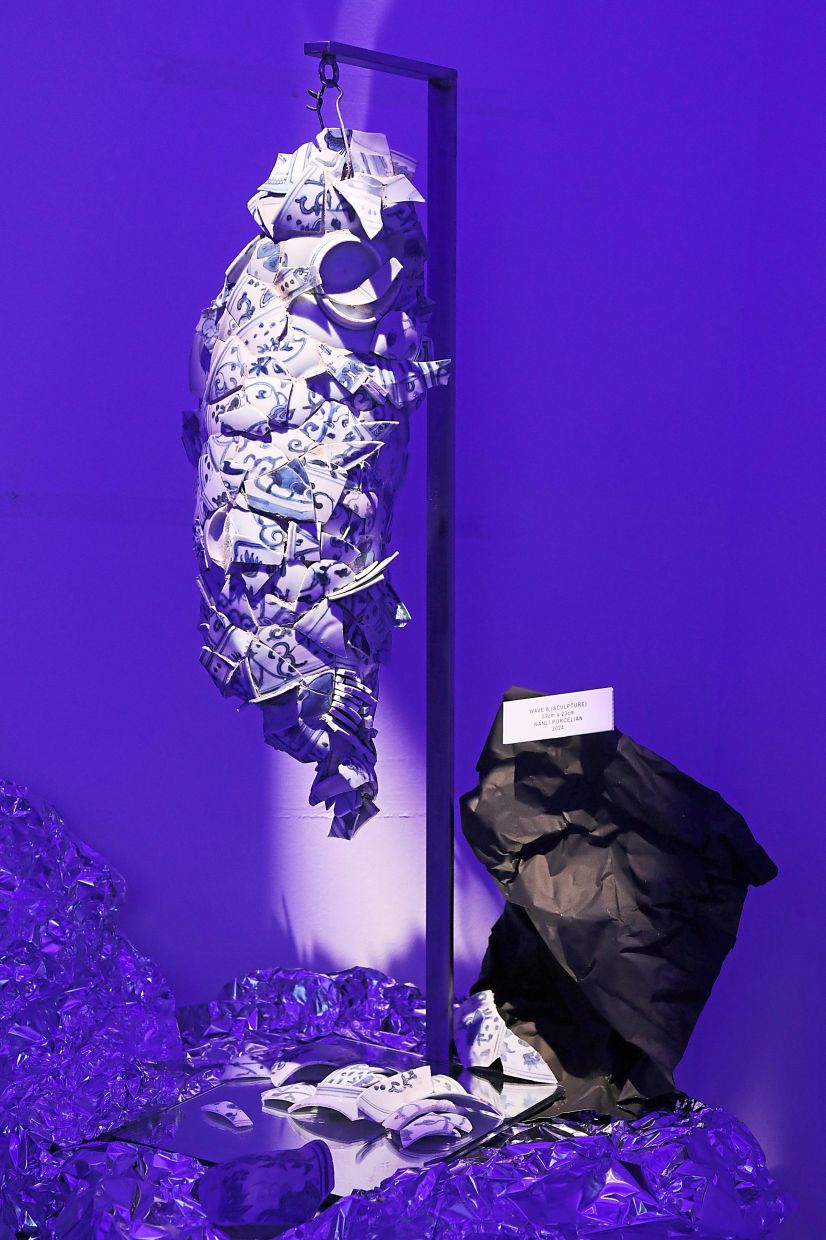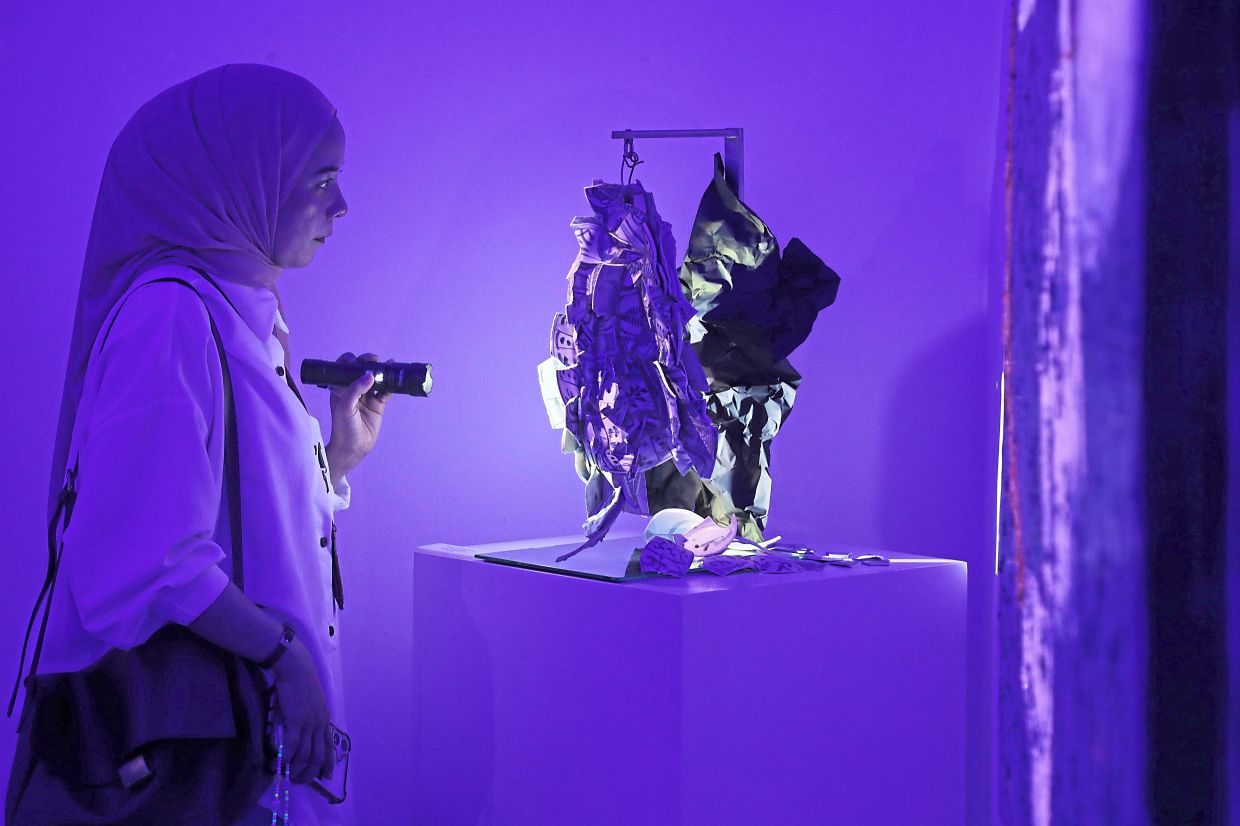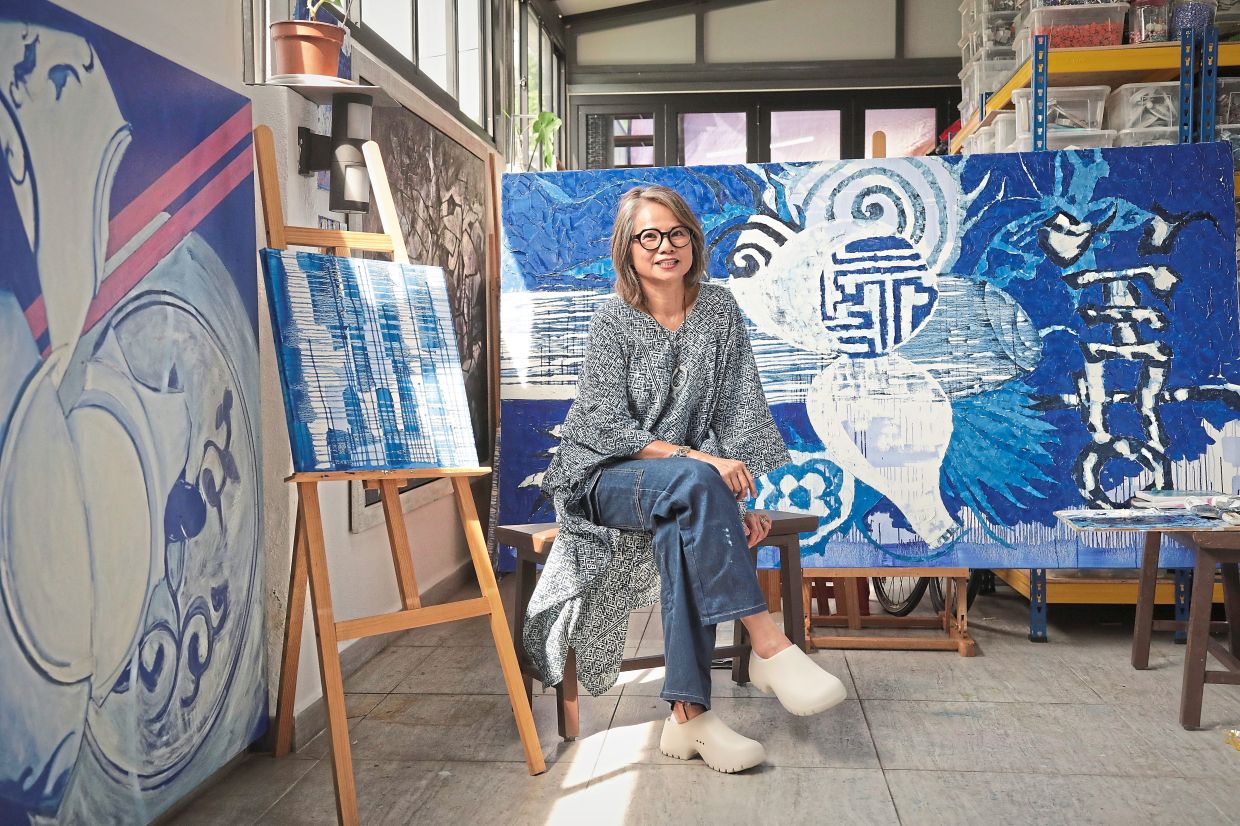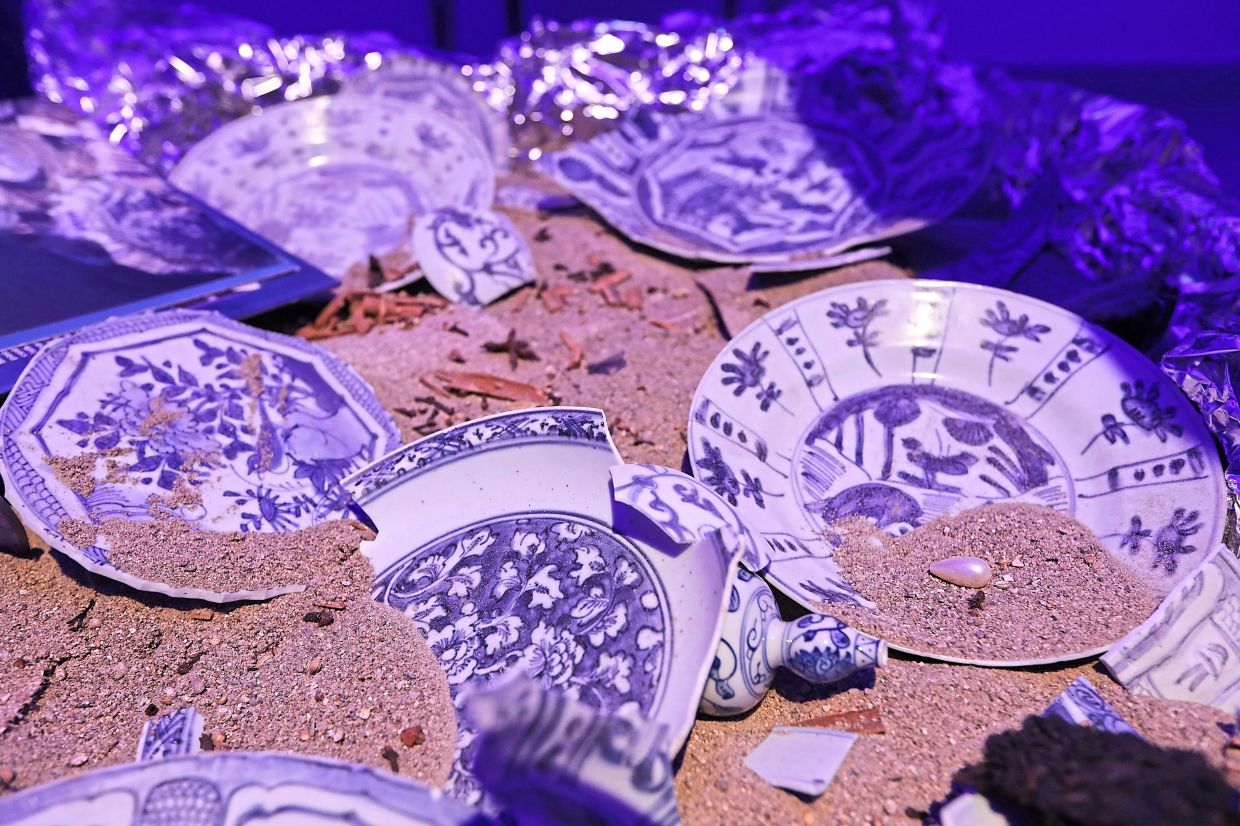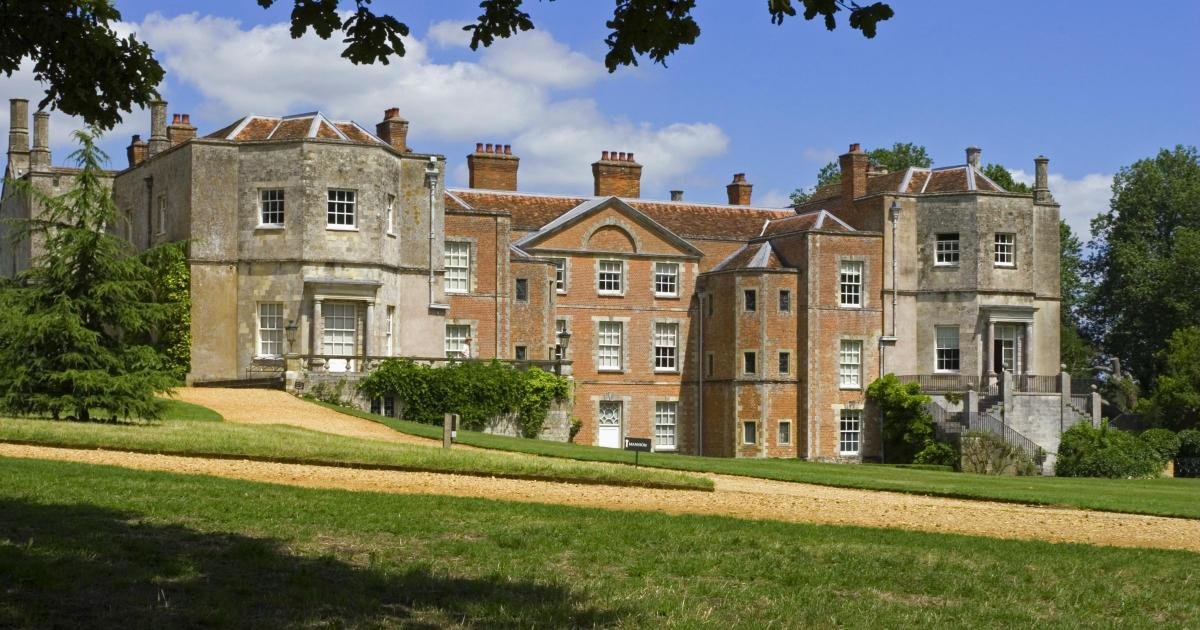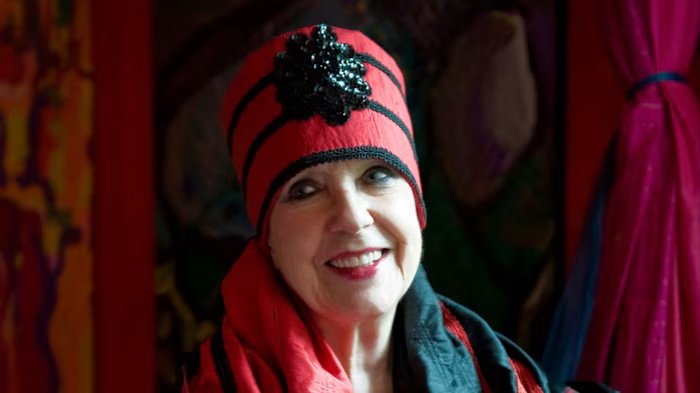Bathed in a serene indigo glow, artist-sculptor Alice Chang’s Me, Then Blue solo exhibition at Lai Lai Art Gallery and Studio in Kuala Ampang, Selangor feels like being gently immersed in the deep blue sea.
Running until July 29, this is Chang’s fifth solo show – a tribute to memory, imperfection, and transformation, brought to life through 11 sculptural works and 20 oil paintings.
Stepping into the gallery, you’ll find her new exhibition deeply anchored in maritime history.
Chang’s works draw inspiration from the Wanli shipwreck, a 17th-century Portuguese trading vessel that sank off Terengganu’s coast in 1625. The ship carried delicate blue-and-white porcelain from Jingdezhen, China’s famed porcelain capital. Named after Ming Dynasty’s Emperor Wanli (1573–1620), its remnants were first discovered by local fishermen in 1998, with more of the wreck found in 2004.
While intact porcelain pieces ended up in museums and private collections, the broken fragments were mostly discarded as worthless.In 2019, Chang came across a social media post asking if anyone wanted the broken pieces salvaged from the wreck.
“If nobody wanted them, these pieces would simply be discarded, which felt like such a waste. Just because they’re broken doesn’t mean they’ve lost their value – they still carry the same story and history as the intact ones,” says Chang, 56, who is known for her sculptural works using porcelain shards.
“So I reached out, because I felt I could create something meaningful from these fragments and give them a second life,” she adds.
For most people, Chang is best known for her mosaic sculpture The Lady, which is still on display in one of Kuala Lumpur’s Chinatown tourist areas.
With Me, Then Blue, Chang finds a broader “canvas” to express and expand her artistic vision.
Looking below, from above
After arranging for the fragments to be transported to her studio at Lai Lai Art Gallery and carefully cleaned, Chang found herself surrounded by nearly 50kg of weathered porcelain shards – each bearing traces of the sea and centuries of history.
“To be honest, I wasn’t sure what to do with the pieces at first, so I just sat on them – figuratively, of course – for about five years. Then last year, I realised that the 400th anniversary of the ship’s sinking would be in 2025 and thought it would be nice to do a show to commemorate it, so I started working on the sculptures,” says Chang.
For the sculptures, Chang used eco-friendly organic cement, carefully piecing the fragments together in their original form out of respect for their history. Some of these sculptures are displayed suspended above a mirror, adding another layer of reflection and depth.
“I designed them like this so that when you look at the pieces through the mirror, it’s as though you’re looking at it from above the sea’s surface, down into the depths of the ocean,” she explains.
While working on the sculptures, Chang became curious about the motifs she saw on the shards.
“Many of them reflected everyday life in ancient China during the Ming Dynasty. There’s a lot of flora and fauna too, like peaches and deer. I wanted to put myself in their shoes, but with a contemporary twist, so this led to me creating the oil paintings,” she says.
During a recent gallery tour, Chang pointed to a box filled with sand and scattered porcelain shards.
“Even after spending hundreds of years under the sea, the porcelain is still in very good condition, thanks to the quality of the clay used. Jingdezhen is one of the few places you can find large deposits of high-quality Kaolin clay, which is why the city is so well-known for its porcelain,” says Chang.
“The blue comes from cobalt. Back then, the people who painted these pieces weren’t professionally trained. They just drew from the heart, naturally creating something so beautiful,” she adds, turning a piece around in her hand.
A tribute to history
Chang emphasises that this is more than just an art exhibition for her.
“I wanted to share the story of the Wanli shipwreck because I feel that not many Malaysians know about it. Some 400 years ago, before Malaysia became the Malaysia that we know today, it was part of the Maritime Silk Road, a thriving trading hub within a global network of commerce. This is part of our history,” she says.
“Who knows what other shipwrecks still lie on the ocean floor in Malaysian waters, quietly waiting to be discovered.”
Next to the sandbox filled with porcelain fragments is Chang’s copy of The Wanli Shipwreck And Its Ceramic Cargo (2007), a 360-page tome published by marine archaeologist Sten Sjostrand and Sharipah Lok Lok Syed Idrus, assistant curator of Malaysia’s Department of Museums, Conservation Division.
To date, it’s the most comprehensive book on the Wanli shipwreck and its treasures.
Though its pages are worn from her frequent use, Chang still encourages visitors to leaf through the book to learn more about the Wanli.
“I hope this exhibition will encourage everyone who visits to look deeper beyond the surface and find beauty in the broken,” she concludes.
Me, Then Blue is showing at Lai Lai Art Gallery and Studio in Kuala Ampang, Selangor until July 29. Open: 10am-5pm, closed on Monday and Thursday.


